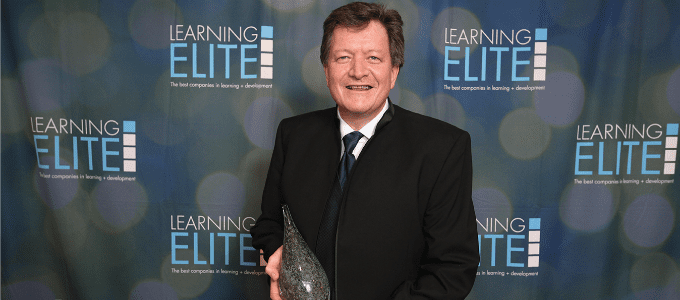Kimo Kippen, chief learning officer at Hilton Worldwide, set out to centralize the company’s employee development function and launch Hilton Worldwide University.
It would be hard to find a learning and development transformation more significant than that of Hilton Worldwide.
After being acquired by private equity firm Blackstone Group in 2007 and moving across the country from its longtime headquarters in Beverly Hills, California, to McLean, Virginia, the company hired Chief Learning Officer Kimo Kippen, who set out to centralize its employee development function and launch the company’s corporate university.
Change was pervasive across the company with every function and department assessing its needs and capabilities and shifting its approach, Kippen said. L&D was no exception.
“The journey weembarked upon was to bring it to center, toinventory and assess all that we had and then to look at best practices both internally and externally to determine what would be the best solution moving forward for the organization,” he said.
The result was the formation of Hilton Worldwide University, which employs 70 corporate L&D professionals as well as hundreds of trainers in the company’s 4,200 hotels, resorts and time-share properties in 93 countries to deliver a range of training and development opportunities to employees at all levels.
For investors, the deal paid off. When Blackstone took the company public in 2013, Hilton Worldwide had a valuation of $22 billion (now at $29.5 billion). In learning terms, results have been equally significant. The company came in at No. 3 in the 2015 LearningElite ranking, the highest debut for a first-time participant since the inaugural year of the benchmarking program.
Both milestones are the result of a strong corporate brand finding its place again and putting the right structure in place to deliver a positive hotel guest experience. “To have a great brand, you have to have great learning,” Kippen said. “You have got to have great training in place. It’s all tied to our brand promise and our ability to deliver that brand promise.”
The company employs more than 300,000 people in corporately owned, managed or franchised properties under several brand names including the company’s namesake full-service hotels as well as Hilton Garden Inn, Embassy Suites, Conrad Hotels and Resorts and the Waldorf-Astoria.
To stay in tune with this rapidly growing business, Hilton’s L&D team aims to “enable” its business partners by deploying consultants who work directly with them to design, create, deliver and measure employee development. The aim, Kippen said, it to make the most of learning’s role in what he called the service-profit chain that drives better guest experiences, higher loyalty and the resulting market share and profitability.
With the recognition of learning’s role in guest satisfaction comes a heightened focus on results. Hilton’s L&D staff is challenged to show progress, but it’s focused on what Kippen called the “right conversation,” driving better results and not simply justifying L&D’s existence.
“I never, ever, ever got questions as to why learning was important,” he said. “That was significant. Now, I would get questioned on, ‘How do we make it more efficient? How do we make it more effective?’ But I was never asked, ‘Why are we doing this?’ ”
The growth of Hilton Worldwide University demonstrates executives’ belief that Kippen and his team are delivering on their end of the deal. According to Kippen, L&D’s budget and staffing have grown about 20 percent every year, from approximately $11 million in 2010 to $20.5 million this year.
Not content to savor their success, Kippen and his team are focused on deploying technology to deliver shorter, focused learning experiences such as via the Virtual Counselor course for salespeople. The company’s mobile app for the “Leadership in 3 Minutes or Less!” series provides access to short videos from external content providers like Harvard, Skillsoft and TED Talks, as well as a library created by Hilton executives and general managers. That app has been distributed to 12,000 leaders.
That sort of opportunistic approach is critical for L&D leaders, Kippen said. “Go where the fish are biting,” he said. “There’s always somebody out there who wants to look at innovation, or look at change or look at perhaps doing something a different way. Learning can become an avenue for that.”















